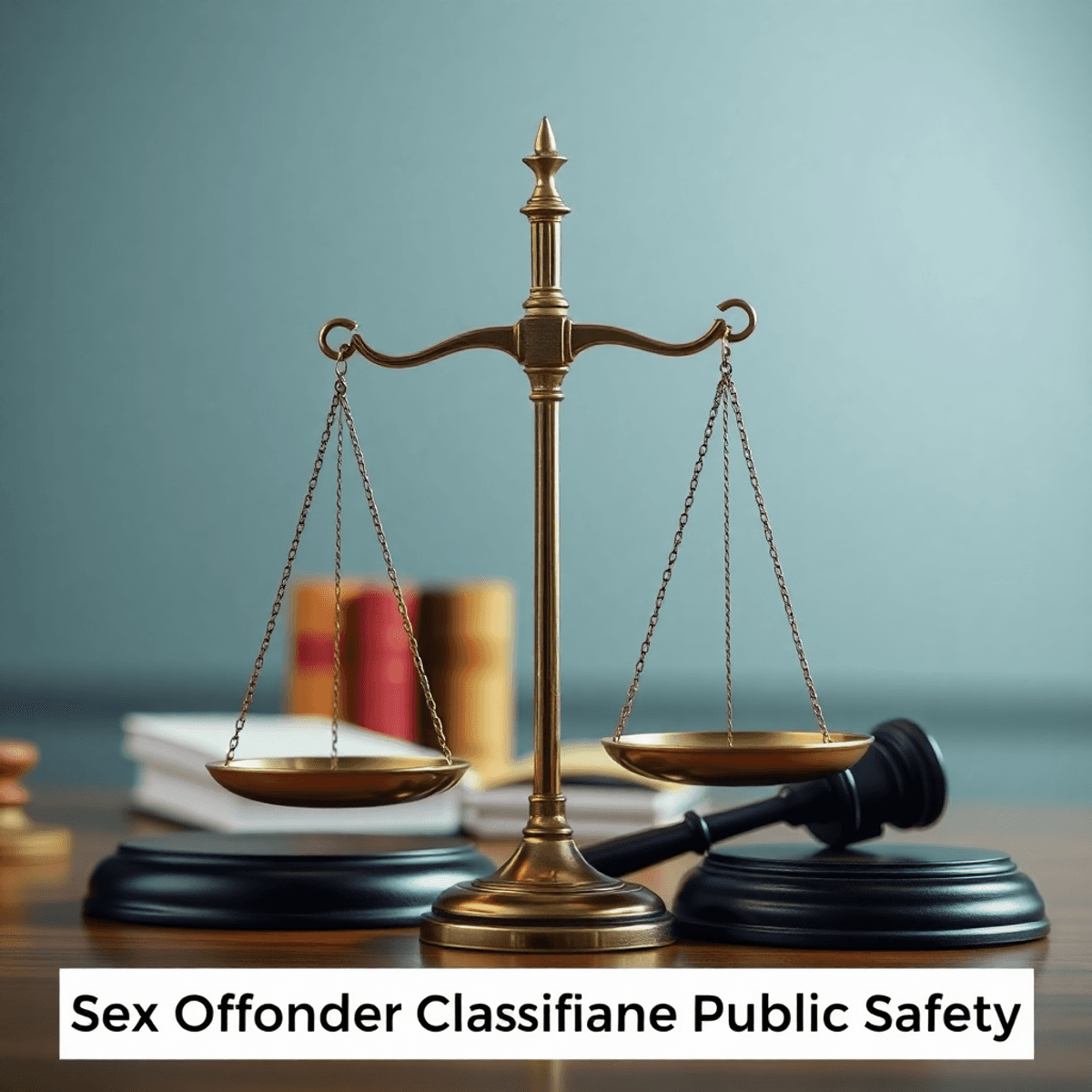
What is a sex offender?
A sex offender is someone who has been found guilty of a crime related to sex. These crimes can include things like sexual assault, rape, child molestation, or having explicit materials involving minors. The exact legal definition can vary depending on the area, as it reflects different cultural beliefs and legal systems.
Types of Sex Crimes that Lead to Sex Offender Classification
Some examples of sex crimes that can result in someone being classified as a sex offender are:
- Sexual assault – when someone engages in sexual contact without consent
- Statutory rape – when an adult engages in sexual activity with a minor
- Child sexual abuse – any form of sexual conduct involving children
- Incest – when family members engage in sexual relations
- Possession or distribution of child exploitation materials
Understanding what it means to be a sex offender is important for several reasons. It helps communities protect vulnerable people, allows law enforcement to keep an eye on potential dangers, and helps create effective treatment programs. This knowledge is crucial for:
- Creating appropriate legal responses
- Developing prevention strategies
- Implementing effective rehabilitation programs
- Protecting public safety
- Supporting victims of sexual crimes
The classification of sex offenders has an impact on both legal cases and measures taken to ensure public safety. It determines how long someone will be sentenced, what kind of registration they need to do, and where they can live or work after being released. This system aims to find a balance between keeping the public safe and giving offenders a chance to rehabilitate while also recognizing the seriousness of sexual crimes.
In light of these complex issues surrounding sex crimes and offenders, it’s important to explore alternative avenues for relationship-building that prioritize safety and consent. For instance, mail order bride sites offer a unique platform for individuals seeking serious relationships with foreign women. These platforms come with their own set of challenges and require an understanding of the essential strategies for successful online dating.
On the other hand, if you’re looking for more casual interactions, there are various alternatives to traditional adult platforms such as Chaturbate. Websites like HookupMentor.net provide an opportunity to connect and explore exciting encounters in a safe environment.
Understanding Sex Offenders
Sex offenders are classified based on specific criminal acts that vary in severity and nature. The legal system categorizes these offenses into distinct types:
1. Violent Sexual Offenses
- Rape and sexual assault
- Child molestation
- Aggravated sexual abuse
- Sexual battery
2. Non-Contact Sexual Offenses
- Voyeurism
- Exhibitionism
- Possession or distribution of child pornography
- Internet-based sexual offenses
3. Statutory Offenses
- Sexual activity with minors below the age of consent
- Statutory rape
- Sexual conduct with vulnerable adults
For offenders deemed too dangerous for release, the legal system employs civil confinement. This measure allows authorities to keep high-risk sex offenders in secure facilities after completing their prison sentences. The decision for civil confinement relies on psychological evaluations, risk assessments, and the offender’s criminal history.
The definition of a sex offender varies significantly across different cultures and legal jurisdictions. These variations reflect:
1. Cultural Differences
- Age of consent variations (ranging from 14 to 21 across different countries)
- Religious and social values influencing legal definitions
- Cultural attitudes toward sexuality and relationships
2. Legal System Variations
- Different classification systems for offense severity
- Varying requirements for sex offender registration
- Distinct approaches to juvenile sex offenders
- Diverse rehabilitation and treatment programs
The U.S. legal system maintains specific guidelines for classifying sex offenders based on offense severity:
1. Tier Classification
- Tier 1: Lower-level offenses requiring 15-year registration
- Tier 2: Mid-level offenses requiring 25-year registration
- Tier 3: Severe offenses requiring lifetime registration
This classification system helps law enforcement agencies and communities implement appropriate monitoring and management strategies for different types of sex offenders
Understanding Sex Offender Registration Laws
Sex offender registration laws are designed to ensure that convicted sex offenders provide their personal information to law enforcement agencies. These laws were created as a response to the need for better tracking and monitoring of sex offenders in the community.
The Origins of Sex Offender Registration Laws
The foundation of sex offender registration laws can be traced back to two important pieces of legislation:
- Jacob Wetterling Act (1994): This act was the first federal law that required states to implement a system for registering sex offenders. It was named after Jacob Wetterling, a young boy who was abducted and murdered in Minnesota.
- Megan’s Law (1996): This law built upon the Jacob Wetterling Act by requiring states to make certain information about registered sex offenders available to the public. It was named after Megan Kanka, a young girl who was raped and murdered by a convicted sex offender in New Jersey.
What Information Do Sex Offenders Need to Register?
When a person is convicted of a sexual offense, they are typically required to register with law enforcement agencies. The specific information that must be provided during registration may vary by state, but it generally includes:
- Name and any aliases used
- Current photograph
- Residential address
- Employment information
- Vehicle details
- Internet identifiers (such as email addresses or social media accounts)
How Long Do Sex Offenders Need to Register?
The length of time that a sex offender is required to register depends on the severity of their offense. Most states categorize sexual offenses into different tiers, each with its own registration duration:
- Tier 1 Offenders: Those convicted of less severe offenses, such as misdemeanor sexual assault or indecent exposure, usually have to register for 15 years.
- Tier 2 Offenders: Individuals convicted of more serious offenses like felony sexual assault or child pornography offenses typically face a 25-year registration requirement.
- Tier 3 Offenders: Convicted rapists and other high-risk offenders are usually subject to lifetime registration.
Why Are Sex Offender Registries Made Public?
Sex offender registries are intended to enhance public safety by providing communities with access to information about individuals who may pose a threat. Here are some reasons why these registries are made public:
- Community Awareness: By allowing community members to search for sex offenders in their area, registries aim to raise awareness about potential dangers and encourage vigilance.
- Informed Decision-Making: Accessing offense history and risk level assessments can help individuals make informed decisions regarding their safety and the safety of their children.
- Notifications: Some jurisdictions offer notification systems where residents can receive alerts whenever a registered sex offender moves into their neighborhood.
How Do States Manage Sex Offender Registration?
Each state has its own system for managing sex offender registration. However, there is also a federal database known as the National Sex Offender Registry that collects information from all states.
States are responsible for ensuring that convicted sex offenders comply with registration requirements. Failure to register can result in criminal charges at both the state and federal levels.
Additional Restrictions on Registered Offenders
In addition to the legal obligations imposed by registration laws, some jurisdictions have implemented additional restrictions on registered sex offenders. These restrictions may include:
- Prohibiting registered offenders from living or working near schools or daycare centers
- Limiting internet access or monitoring online activities
- Imposing travel restrictions or requiring notification before traveling outside certain areas
- Setting limitations on employment opportunities in sensitive positions such as schools or childcare facilities
These measures aim to further protect vulnerable populations and prevent reoffending by imposing additional barriers on individuals who have already committed sexual offenses.
Recidivism Rates Among Sex Offenders
Research on sex offender recidivism rates reveals complex patterns that challenge common perceptions. Studies indicate varying reoffense rates across different types of sex offenders:
- Child molesters show a 13% recidivism rate over 5 years
- Rapists demonstrate a 19% rate within the same period
- Non-contact offenders exhibit rates around 21%
The accuracy of these statistics faces significant challenges. Many sexual offenses go unreported, creating a “dark figure” that masks true recidivism rates. Victims often hesitate to report due to:
- Fear of retaliation
- Shame or stigma
- Relationship with the offender
- Lack of faith in the justice system
Risk assessment tools help predict potential reoffending behavior. The Static-99R, a widely-used instrument, evaluates factors including:
- Age at release
- Prior sex offenses
- Relationship history
- Victim characteristics
- Criminal history
These tools assign risk levels ranging from low to high-risk, helping authorities determine:
- Supervision requirements
- Treatment intensity
- Registration duration
- Housing restrictions
Recent developments in risk assessment incorporate dynamic factors like substance abuse and social support, providing more accurate predictions of recidivism potential.
Treatment and Management of Sex Offenders
Behavior modification programs play a crucial role in sex offender rehabilitation. Research indicates these programs can reduce recidivism rates by 15-20% when properly implemented. The most effective treatments include:
- Cognitive-behavioral therapy
- Relapse prevention strategies
- Social skills training
- Empathy development exercises
Chemical castration represents a controversial yet utilized treatment option for severe cases. This medical intervention reduces testosterone levels to decrease sexual urges and compulsive behaviors. States like California and Florida mandate chemical castration for certain repeat offenders.
The current classification and management system faces significant criticism:
Research-Based Concerns:
- Risk assessment tools can produce false positives
- One-size-fits-all registration requirements ignore individual circumstances
- Limited resources for treatment programs
Social Impact Issues:
- Housing restrictions create homeless populations
- Public stigma prevents successful reintegration
- Employment barriers increase isolation
Mental health professionals advocate for individualized treatment approaches based on specific risk factors and offense patterns. Evidence suggests combining therapy, medication, and community support produces better outcomes than punitive measures alone.
The effectiveness of sex offender management depends on balancing public safety with rehabilitation opportunities. Experts recommend regular program evaluations and policy updates to reflect new research findings.
FAQs (Frequently Asked Questions)
What is a sex offender and how is it defined?
A sex offender is an individual who has been convicted of a sex crime, which includes offenses such as sexual assault, child molestation, or possession of child pornography. Understanding the definition is crucial for recognizing the legal implications and societal impact associated with sex offenders.
What types of sex crimes lead to classification as a sex offender?
Sex crimes that result in sex-offender classification include sexual assault, rape, child exploitation, and other offenses involving non-consensual sexual acts. These crimes vary by jurisdiction but generally involve illegal sexual behavior that harms or exploits others.
What are sex offender registration laws and why are they important?
Sex offender registration laws require convicted individuals to register their personal information with authorities. These laws aim to enhance public safety by making registries accessible to the public, allowing communities to be informed about the presence of sex offenders in their area.
How do recidivism rates vary among sex offenders and what tools assess reoffense risk?
Recidivism rates among sex offenders vary widely depending on factors such as offense type and treatment history. Risk assessment tools like Static-99R are used to evaluate the likelihood of reoffending, helping authorities manage supervision and intervention strategies effectively.
What treatment options exist for managing sex offenders and how effective are they?
Treatment options include behavior modification programs aimed at reducing recidivism and chemical castration for severe paraphilic disorders. While behavior modification has shown effectiveness in some cases, chemical castration remains controversial. Overall, treatment efficacy varies and is often supplemented by legal management methods.
What is civil confinement and how does it relate to dangerous sex offenders?
Civil confinement is a legal measure used to detain sexually dangerous offenders after they have served their criminal sentences if they are deemed a continued threat to society. This approach varies culturally and legally but serves as a method of managing high-risk individuals beyond traditional incarceration.


